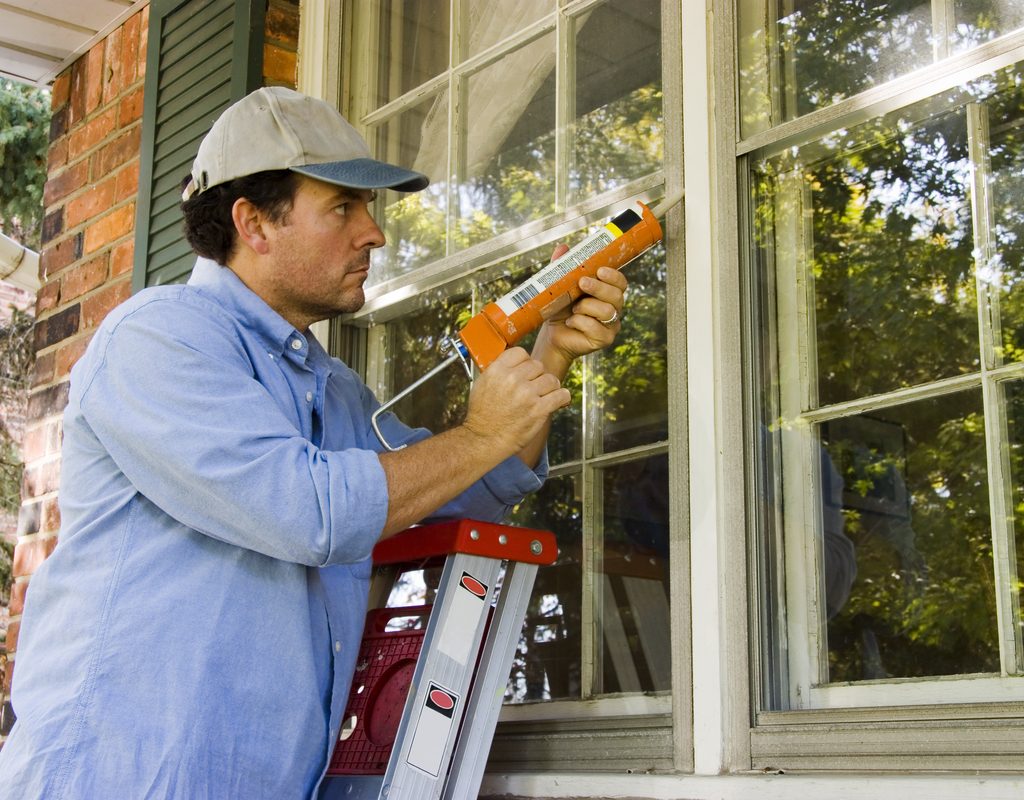Running a household can be costly and it’s never a bad idea to look for ways to save money any way you can. From simple shopping tips to all-out genius energy-saving hacks, we’re highlighting 10 of our favorite ways to save money that are so simple, you’ll wonder why you never did them before!
Get ready to save big with very little effort!

Take a bite out of energy vampires with these cheap life hacks
There are a few simple things you can do to help cut your energy costs as winter approaches (and all throughout the year).
Weather seal your windows and doors
This hack helps not just in winter, but in summer months, too. Sealing gaps around doors and windows can make your home feels warmer — or cooler in summer — and according to the Department of Energy, could actually help you save up to 20% off the cost of your home energy bill.
Switch your ceiling fans to the correct seasonal setting
This simple hack literally takes seconds to do, but could have a significant impact on lowering your energy bill. During summer, ceiling fans should be set to spin clockwise, so the blades push air toward the center of the room, mimicking a cool breeze. But, in the winter, you’ll want the air pulled up in the middle of the room, and then warm air pushed downwards without creating a breeze.
So how do you get your ceiling fan to cooperate? Stand under your ceiling fan and see if the air is blowing down on you. If it is, flip the tiny directional switch on your ceiling fan’s base to change the airflow in the room to the winter setting. Remember to do the same process again in the spring.
Change your furnace’s filter
You’ll get double the reward by keeping your furnace tuned up.
- Your furnace will run more efficiently, helping to lower your energy costs.
- It will prolong the life of your furnace.
An annual furnace tune-up can be DIY’d in about three hours. Your furnace’s filter should be changed every month during heating season (if the filter is used for both heat and AC, you’ll need to change the filters every month, all year long). Note: When replacing air filters, always be sure that you insert the new filter facing the correct way (it should be marked directly on the filter).
Use a programmable thermostat
By having a programmable thermostat, you’ll be able to adjust the temperature in your home so that you aren’t wasting energy heating your home while you are out (while you are at work, for example). You can preset your thermostat to raise the heat shortly before you are due to arrive home in the evening, as well as lowering it overnight while you sleep and then programming it to raise the temperature before you get out of bed in the morning.
Wash clothes in warm water, but rinse in cold
Washing and rinsing your clothes in hot water wastes a lot of money. The cost of running your washing machine is negligible; the cost of heating all of that water is where the dollars really add up. Detergents work best in temperatures between 65 to 85 degrees, but cold water is every bit as effective when it comes to the rinse cycle. So always rinse in cold water.
Replace light bulbs with LEDs
As bulbs burn out, consider replacing them with LED bulbs. Every LED bulb could reduce your energy use by up to 80% and save up to $80 over the lifetime of the bulb. Plus, LED bulbs can last up to 25 times longer than standard incandescent bulbs. That’s a win/win any way you look at it.

Cheap life hacks that are so easy to do
Just making a few small changes to your daily and weekly routines can help save money — without feeling like you’re being forced to give up something you really love.
Curb your take-out coffee habit… for good
If you’re like many other Americans, your morning routine includes a stop at the local coffee shop. While this little ritual might seem like a small indulgence, it is actually costing you more money than you think.
According to a recent study, the average cost of a cup of black coffee in the United States is $2.70. If you pick up coffee five times a week, your caffeine fix is costing you about $13.50 a week or a whopping $702 per year — and that’s without the fancy flavors, jumbo sizes, or frozen coffee concoctions.
Making your own pot of coffee in the morning is really pretty simple. Get yourself an automatic drip coffeemaker, set it up with water and coffee grounds at night before you go to bed, and press the start button in the morning before you start getting dressed. When you’re ready to head out the door, there will be a freshly brewed pot of coffee waiting for you. Pour your piping hot coffee into a travel mug, and then fill a thermos with the rest of the pot and you’re ready to face your day and save money at the same time!
DIY household cleaners
There’s a way you can save a few household dollars and help the environment, too. Skip the store-bought all-purpose cleaner, laden with harmful chemicals, and make your own using nothing more than a plastic spray bottle, 4 tablespoons of baking soda, and a quart of warm water. It’s even safe to use around food.
Or you can create a DIY glass cleaner with a mix of 1/2 cup of white vinegar and 2 cups of water. Spray on, wipe off, and get ready for sparkling clean windows that have saved you some household shopping dollars!
Fewer paper towels = less wasted cash
Think of the dollars wasted and the unnecessary trash accumulated every time you use a paper towel around the house. There are times when paper towels should be used — wiping down the toilet seat and cleaning up raw chicken juices from your countertop are two instances that come to mind.
But, there are also plenty of times when ordinary sponges or reusable cloths can step in to do the job (you can even put sponges in the dishwasher to sterilize them). And for drying hands after washing, just use a regular towel. By reducing the amount of paper towels you use each week, you’ll free up a few shopping dollars and some space in your trash can, too.
Make a list before you shop
Before you wander around your grocery store aimlessly on shopping day, take a few moments to take stock of what you have in the house. Plan meals around ingredients already in your refrigerator (so you don’t end up tossing out unused produce later in the week). You’ll spend less time — and money — in the store when you walk in with a list of the items you actually need to buy. Plus, you can save even more money by going through the sale items in your weekly store flyer and using that as a starting point for your weekly meal plan calendar.
There are many other ways you can cut costs and live smarter (and cheaper) than you thought possible. Use our life hacks as a starting point, and then look for other simple ways to painlessly cut costs, reduce waste, and enjoy more of the money you earn.


